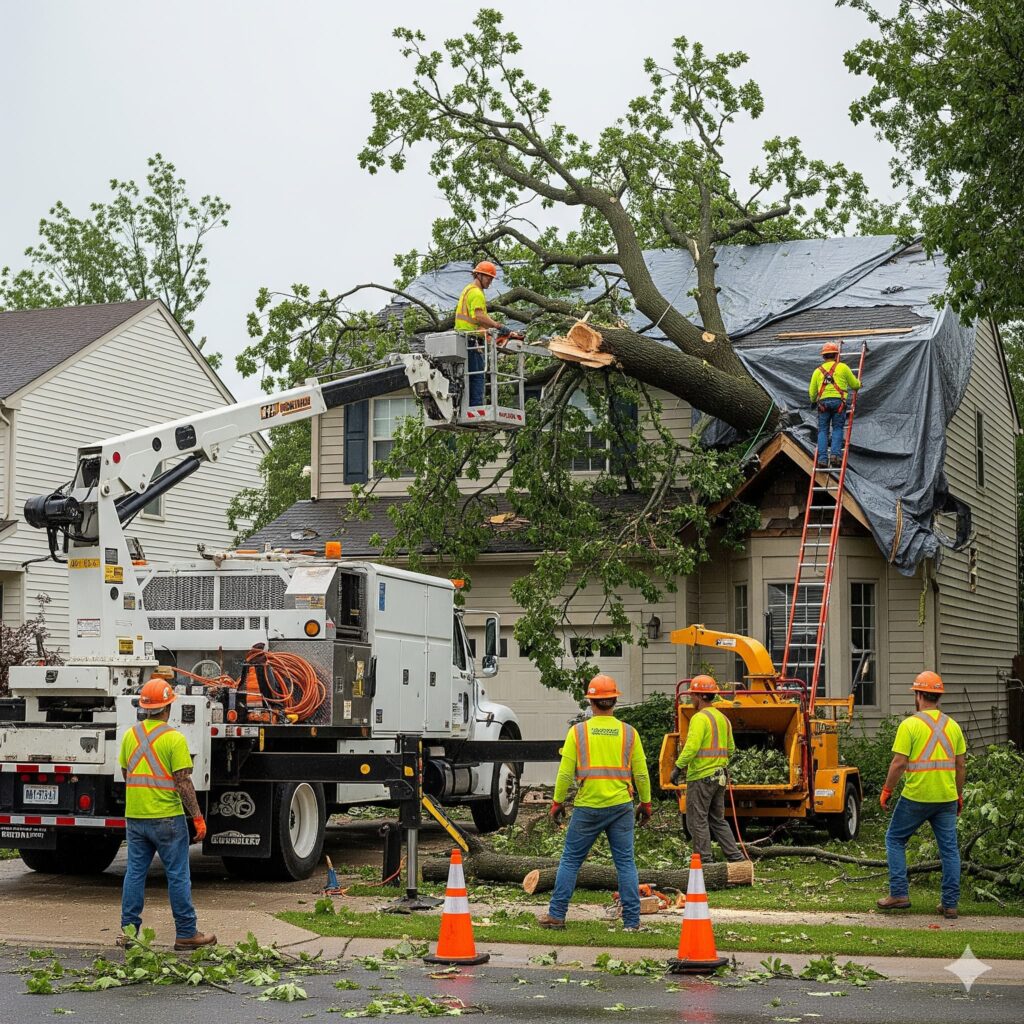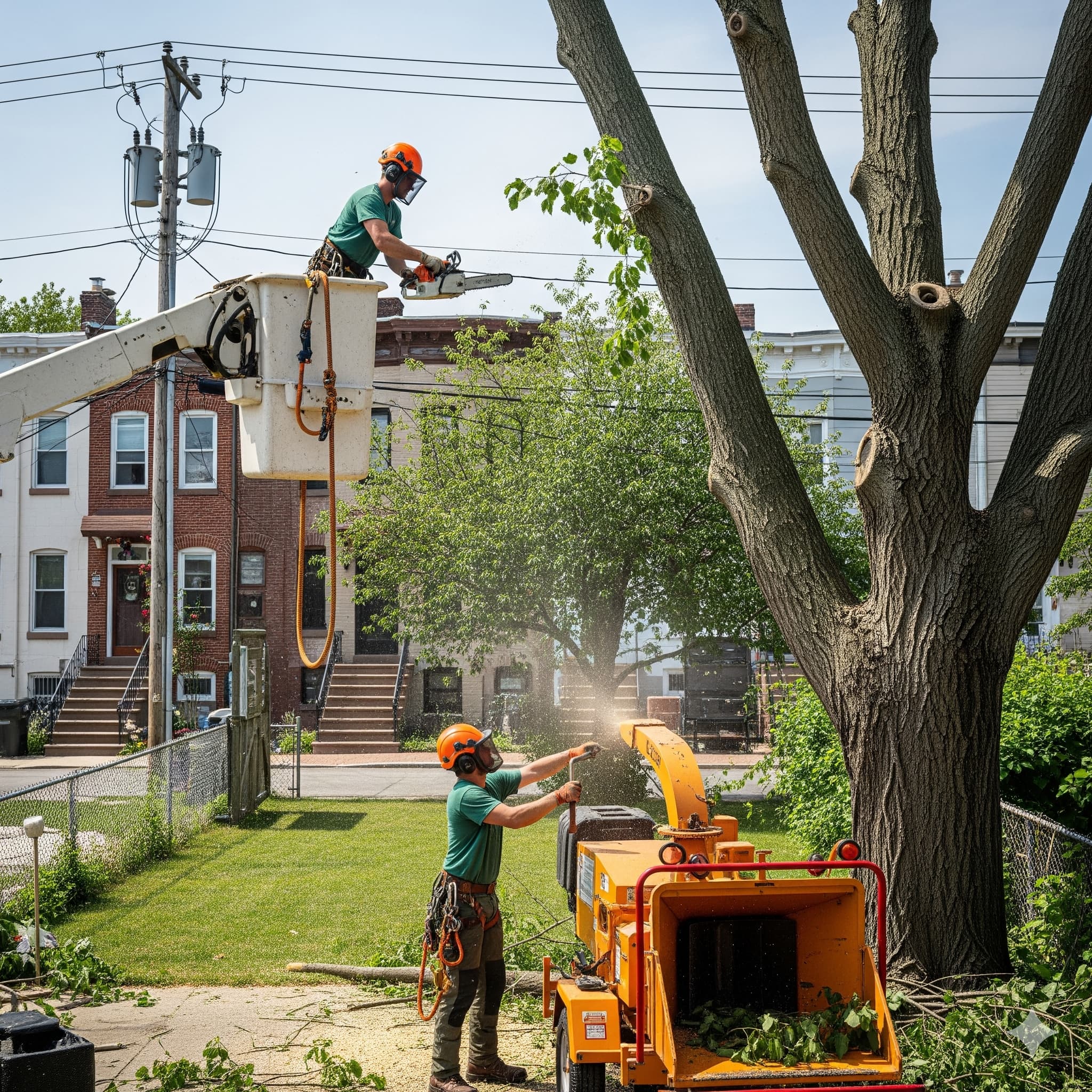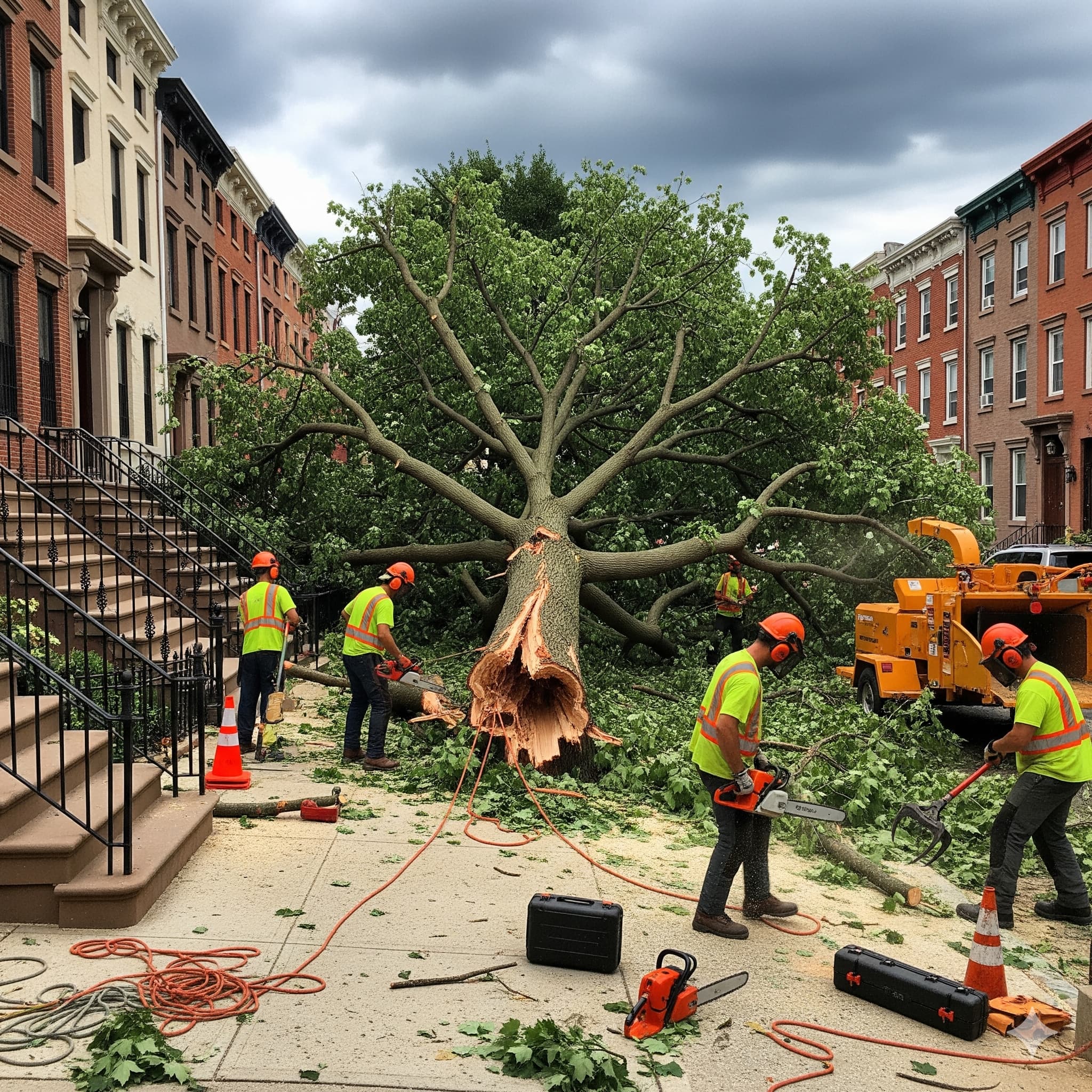
Emergency Tree Service Checklist for NJ Weather Emergencies
Emergency Tree Service Hoboken
New Jersey’s diverse weather patterns create frequent situations requiring immediate emergency tree service response. From Atlantic hurricane season impacts along the Jersey Shore to severe thunderstorms affecting inland communities like Hoboken, having a comprehensive emergency checklist ensures homeowners respond appropriately to tree-related hazards during severe weather events.

Pre-Storm Preparation Checklist
A successful emergency tree service response begins with proactive preparation before severe weather strikes New Jersey. Homeowners should identify potentially hazardous trees on their residential properties, particularly those with dead branches, signs of disease, or structural weaknesses that could fail during storms.
Document existing tree conditions with photographs for insurance purposes, noting any trees leaning toward structures or power lines. Establish relationships with licensed emergency tree service providers before emergencies occur, as response times increase dramatically when entire regions experience simultaneous storm damage throughout Hudson County and the surrounding areas.
Weather Monitoring and Alert Systems
Stay informed through NOAA Weather Radio and local emergency management communications throughout New Jersey’s hurricane season from June through November. Monitor weather conditions during periods when thunderstorms, ice storms, or high wind events pose threats to residential properties and infrastructure.
Sign up for Wireless Emergency Alert (WEA) notifications that provide real-time warnings about severe weather conditions affecting your specific location. These alerts provide critical information about when to expect dangerous conditions requiring emergency tree service response in communities across New Jersey.
Immediate Safety Assessment
When severe weather strikes, conduct initial safety assessments from inside your home before venturing outdoors. Look for obvious hazards like trees or large branches leaning on structures, power lines down, or blocking critical access routes like driveways and walkways.
Never approach downed power lines or trees in contact with electrical wires, even if they appear inactive. Contact your utility company immediately to report electrical hazards before calling emergency tree service professionals to ensure safe working conditions for repair crews.
Emergency Tree Service Contact Protocol
Establish a priority contact system for emergency tree service needs during major weather events affecting New Jersey communities. Primary contacts should include licensed, insured professionals familiar with local conditions and regulations governing emergency tree work.
Avoid door-to-door solicitors who appear immediately after storms, as these operators often lack proper licensing and insurance coverage. Legitimate emergency tree service providers typically arrive in marked vehicles with proper equipment and provide detailed written estimates before beginning work.
Documentation Requirements for Insurance
Photograph all tree damage before emergency tree service work begins, ensuring comprehensive documentation for insurance claims processing. Include images showing the relationship between damaged trees and affected structures, vehicles, or other property improvements.
Request detailed written estimates from emergency tree service providers that specify work scope, materials, equipment, and cleanup procedures. This documentation proves essential for insurance claim processing and helps ensure homeowners receive appropriate coverage for storm-related tree damage repairs.
Safety Priorities During Emergency Response
Prioritize life safety over property protection when severe weather creates hazardous tree conditions around residential properties. If trees threaten structures with people inside, evacuate immediately and contact emergency services before arranging a professional emergency tree service response.
Maintain safe distances from all damaged trees, as compromised root systems and fractured branches can fail unexpectedly even after initial storm conditions pass. Professional emergency tree service providers have the equipment and expertise necessary to assess stability and remove hazards safely.
Utility Coordination Requirements
Coordinate with utility companies when trees affect power lines, gas services, or telecommunications infrastructure serving residential areas throughout New Jersey. Many situations require utility company clearance before emergency tree service providers can safely approach damaged trees.
Request utility markings through New Jersey 811 when emergency tree service work may affect underground infrastructure, even during urgent situations. This coordination prevents additional hazards and ensures compliance with state safety regulations governing excavation and tree removal activities.
Emergency Tree Service Verification
Verify that emergency tree service providers carry appropriate licensing and insurance coverage before authorizing work on residential properties. New Jersey requires specific licensing for tree work professionals, and homeowners should request current certificates before agreeing to emergency services.
Confirm that emergency tree service providers understand local regulations governing storm damage cleanup and debris removal. Professional services handle permit requirements and coordinate with local authorities to ensure compliance with municipal ordinances during emergency response operations.
Cleanup and Restoration Planning
Plan for comprehensive cleanup and restoration following emergency tree service operations during major weather events affecting New Jersey communities. This includes arrangements for debris removal, soil restoration, and temporary repairs to protect property from additional weather exposure.
Professional emergency tree service providers typically include debris cleanup in their service packages, but homeowners should verify cleanup procedures and timeline expectations before authorizing work during high-demand periods following regional storm events.
Post-Emergency Assessment
Conduct thorough property assessments after emergency tree service work concludes to identify additional tree hazards that may require attention. Storm events often weaken trees that don’t immediately fail, creating delayed hazards requiring professional evaluation and treatment.
Schedule follow-up inspections with certified arborists to assess overall tree health and structural integrity following severe weather events. Professional assessment helps identify trees requiring preventive care to reduce future emergency service needs during subsequent weather events.
Insurance Claim Processing
Submit insurance claims promptly following emergency tree service work, including all required documentation and professional estimates for covered damages. Many homeowner’s insurance policies cover emergency tree removal when trees damage structures or block essential access routes.
Maintain detailed records of all emergency tree service expenses, including receipts, photographs, and written correspondence with service providers. This documentation supports insurance claim processing and provides records for tax purposes when applicable.
Long-term Recovery Planning
Develop long-term recovery plans addressing landscape restoration and future storm preparedness based on lessons learned during emergency tree service experiences. This includes selecting replacement trees suited to New Jersey’s climate and storm exposure patterns.
Consider professional tree health assessments and maintenance programs that reduce future emergency tree service needs by maintaining healthy, structurally sound trees capable of withstanding typical weather conditions affecting residential properties throughout the region.
For reliable emergency tree service during New Jersey weather emergencies, contact Hoboken Tree Service Pros. Our certified professionals provide 24/7 emergency response with proper licensing, insurance coverage, and expertise in handling storm damage throughout Hudson County and surrounding communities across New Jersey.



